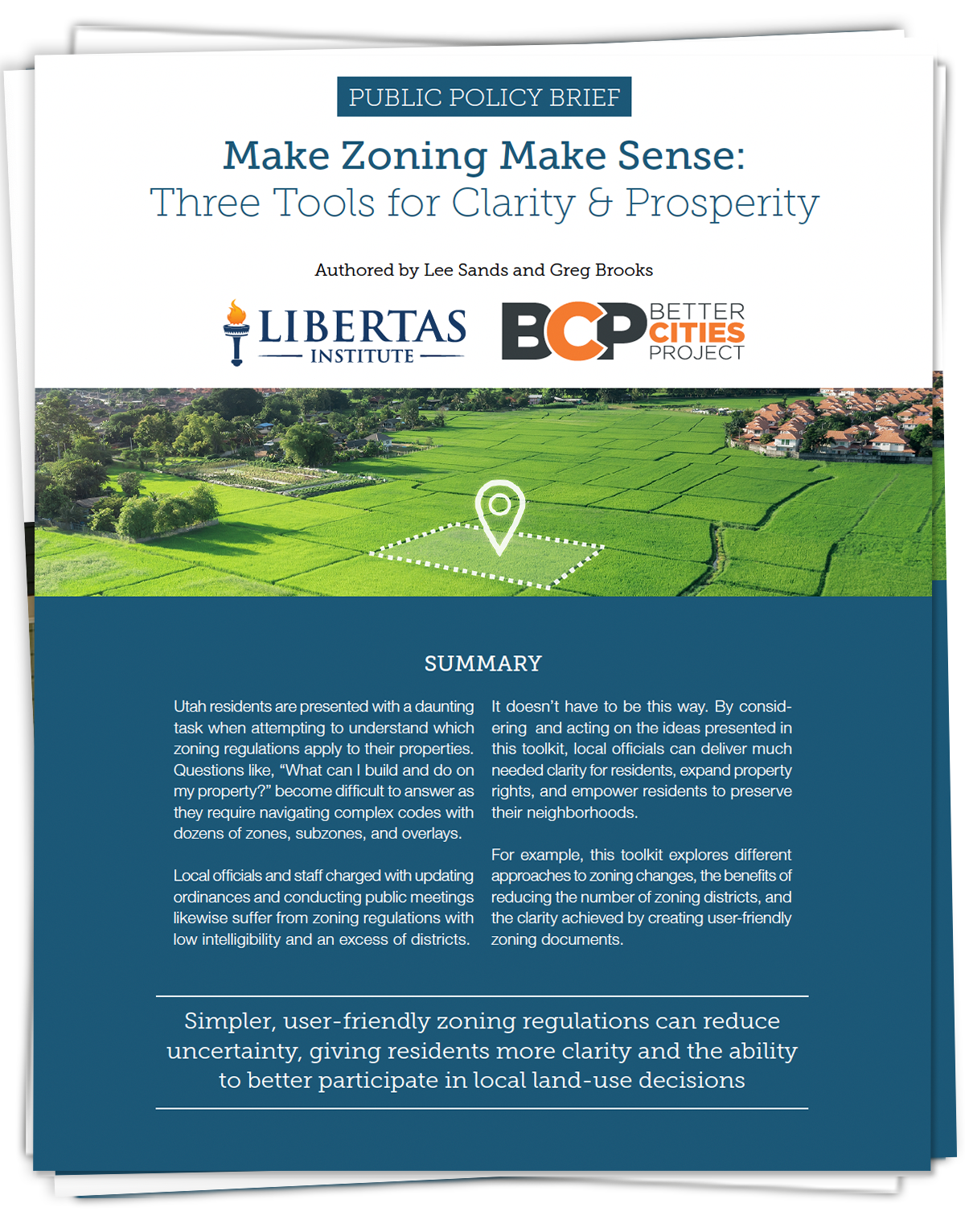Authored by Lee Sands, Local Government Policy Analyst at Libertas Institute, and Greg Brooks, President of Better Cities Project
Utah residents are presented with a daunting task when attempting to understand which zoning regulations apply to their properties. Questions like, “What can I build and do on my property?” become difficult to answer as they require navigating complex codes with dozens of zones, subzones, and overlays.
Local officials and staff charged with updating ordinances and conducting public meetings likewise suffer from zoning regulations with low intelligibility and an excess of districts.
It doesn’t have to be this way. By considering and acting on the ideas presented in this toolkit, local officials can deliver much needed clarity for residents, expand property rights, and empower residents to preserve their neighborhoods.
For example, this toolkit explores different approaches to zoning changes, the benefits of reducing the number of zoning districts, and the clarity achieved by creating user-friendly zoning documents.





